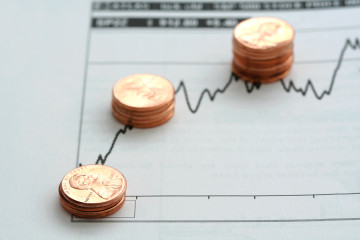Stock Rally in India Faces Hurdles Despite World-Beating Growth

published Sep 3, 2018, 6:53:48 AM, by Ravil Shirodkar and Nupur Acharya
(Bloomberg) —
Another thousand-point milestone is within reach for India’s benchmark equity index.
Following the drubbing earlier this year, the S&P BSE Sensex is nearing the 39,000 level, the gauge’s third round-number mark since surpassing its life-time peak two months ago — a rally that’s helped the gauge cement the tag of Asia’s best performer this year.
While there’s optimism that economic growth topping 8 percent will help power equities higher in the coming months, lingering external risks, most notably from the price of oil — and its impact on the rupee — and stretched valuations is giving some investors a pause.
“Markets have run up a lot and there’s certainly an element of risk when this happens — it is never easy to buy in such times,” said Sunil Sharma, who oversees $1 billion of assets as chief investment officer at Sanctum Wealth Management Pvt. in Mumbai. “There are short-term fears like oil prices that may lead to a correction, though the economy remains on a firm footing.”
Gross domestic product expanded 8.2 percent in the June quarter from a year earlier, the government said after market hours on Friday. That was faster than the 7.6 percent median estimate in a Bloomberg survey of 42 economists.
The beat isn’t prompting investors and analysts to sound the all-clear for Indian equities just yet. Here are some charts that show why:
Valuations
The Sensex trades at an estimated price-earnings ratio of about 21, the steepest among equity benchmarks in the region after New Zealand. Despite the selloff in mid-cap stocks, the one-year forward PE ratio for the Nifty Midcap 100 Index is still at a premium to the Nifty gauge of India’s top 50 companies, signaling higher growth expectations for smaller firms are priced in, UBS Securities India Pvt. said in a report last week.
Earnings Growth
About three-fourths of 50 Nifty members reported results that either beat or met earnings estimates in the June quarter, the highest proportion in at least three quarters, according to calculations by Bloomberg Quint. The “upcycle could be quite significant, a contrast to most parts of the world” as the share of corporate profits in India’s GDP is close to all-time lows, according to Morgan Stanley. For now, the rally has outpaced the outlook for profit growth, with UBS saying consensus earnings for Nifty are likely to be cut 7-8 percent.
Premium Soars
While Indian equities have traditionally traded at a premium to Asian peers because of the nation’s potential for faster economic growth, the valuation gap between MSCI India Index and MSCI Emerging Markets Index has widened to the highest in a decade, Citigroup Inc. said in an Aug. 20 note. Global uncertainties and rich valuations before a general election next year are “enough reasons to be cautious in equities,” the bank said.
Lopsided Rally
While the benchmark indexes hit multiple records in August, gains have been uneven. The Sensex’s 13.5 percent year-to-date climb has been dominated by three stocks — Reliance Industries Ltd., Tata Consultancy Services Ltd. and Infosys Ltd. About three-quarters of the 30 Sensex stocks are trading higher than their 200-day moving average, compared with 94 percent in January when the gauge peaked. The Sensex slid 0.9 percent on Monday, the most in a month, after capping a fifth straight month of gains on Friday.
Fund Flows Moderate
Persistent buying by local equity mutual funds has time and again provided a buffer against foreign outflows. Domestic funds bought $10.8 billion of shares this year, outweighing $283 million of withdrawals by their global peers. Still, retail flows to stock funds have slowed recently, averaging about 100 billion rupees a month from 140-150 billion rupees at the start of the year, according to Citigroup.
Costly Oil
Moody’s Investors Service last week said India, the world’s fastest-growing oil user, risks missing budget targets because of higher energy costs. While elevated crude prices stoke inflation, a spike also weakens the rupee, which causes foreigners to sell Indian assets. It’s a vicious cycle. The currency closed at a record low of 71.22 per dollar on Monday.
“The biggest risk is from macros like oil and the rupee. If the oil goes above $80-82 range and the rupee declines to 73-75 range, it will create problems for the economy, which will result in postponement of FDI and FII flows,” said G. Chokkalingam, managing director at Equinomics Research & Advisory Pvt. in Mumbai. “The whole spiral starts playing out.”
To contact the reporters on this story: Ravil Shirodkar in Mumbai at rshirodkar@bloomberg.net ;Nupur Acharya in Mumbai at nacharya7@bloomberg.net To contact the editors responsible for this story: Divya Balji at dbalji1@bloomberg.net ;Christopher Anstey at canstey@bloomberg.net
COPYRIGHT
© 2018 Bloomberg L.P







No Comment